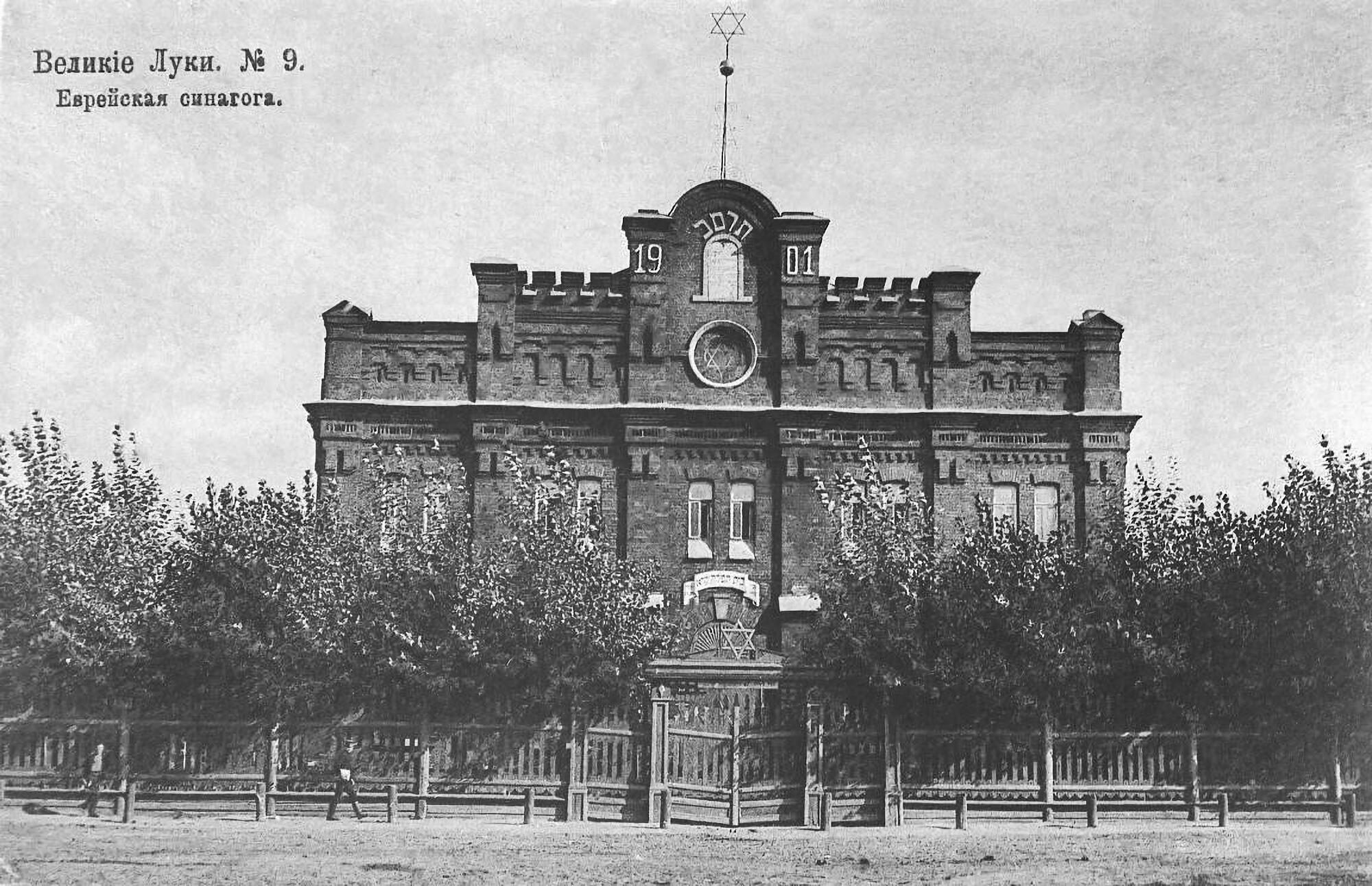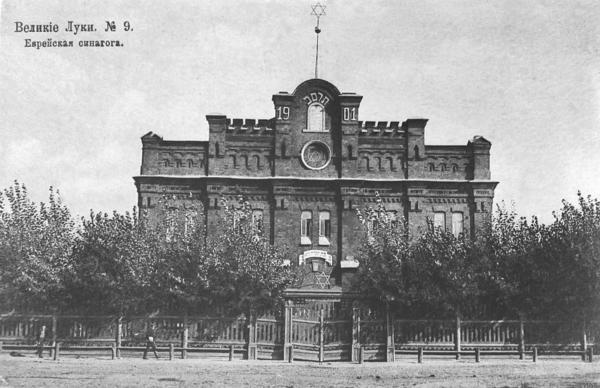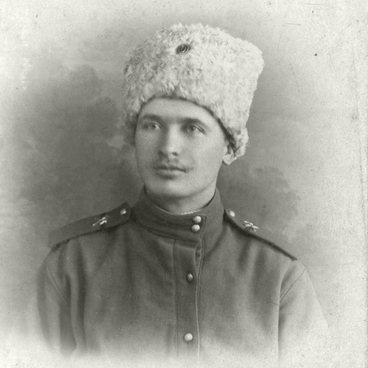The postcard shows the brick synagogue, built on the Right Embankment in 1901. Previously, the land plot where the synagogue was located belonged to the merchant of the first guild Vulf Vyazmensky. On this plot, Vyazmensky had a two-story stone house and a hut.
Nearby was the plot of merchant Shai Berlin with two wooden houses. In the second half of the 19th century, one of Berlin’s houses was used as a temporary synagogue. In 1901, a large permanent synagogue in the then fashionable brick style was built on the neighboring land plot, probably funded by Vyazmensky and Berlin.
This is one of the first permanent synagogues built in Russia outside the Pale of Settlement, where Jews were officially forbidden to live. The life of Russian Jews was spent almost entirely on the struggle for survival in the absence of any rights: the right to live outside the Pale of Settlement, the right to work, the right to study, and most importantly, to a decent life without humiliation. VelIkiye LUki was never part of the Pale of Settlement, although its border was in the immediate vicinity of the city.
According to the laws adopted during the reign of Emperor Alexander II, only certain groups of the Jewish population were allowed to live outside the Pale of Settlement. These were merchants of the first guild, doctors, trade and manufacture advisors, soldiers who had served their military service according to the recruitment regulations, cantonists, pharmacist assistants, dentists, paramedics, midwives and prostitutes.
Artisans were also entitled to residence: tailors, hatters, jewelers and watchmakers, glaziers and tanners, confectioners, brewers, locksmiths, blacksmiths and masons, gardeners and pavers. The artisan had to present a document confirming he knew the trade, and a police clearance certificate. Police and local officials ensured that the artisans would work only in their profession; otherwise, the offender would be evicted within 24 hours.
The postcard was published by the Moscow branch of publishing house A. S. SuvOrin & Co. Partnership in 1916. AleksAndr SuvOrin was one of the major book publishers. Since 1906, he also began to issue postcards with railway maps, and then simply with views of the cities where the railway passed. Between 1909 and 1917, A. S. Suvorin & Co. Partnership was Russia’s largest publisher of picture postcards. Under an agreement with the Ministry of Railways, the agency distributed postcards through the booths it rented at railway stations.
Nearby was the plot of merchant Shai Berlin with two wooden houses. In the second half of the 19th century, one of Berlin’s houses was used as a temporary synagogue. In 1901, a large permanent synagogue in the then fashionable brick style was built on the neighboring land plot, probably funded by Vyazmensky and Berlin.
This is one of the first permanent synagogues built in Russia outside the Pale of Settlement, where Jews were officially forbidden to live. The life of Russian Jews was spent almost entirely on the struggle for survival in the absence of any rights: the right to live outside the Pale of Settlement, the right to work, the right to study, and most importantly, to a decent life without humiliation. VelIkiye LUki was never part of the Pale of Settlement, although its border was in the immediate vicinity of the city.
According to the laws adopted during the reign of Emperor Alexander II, only certain groups of the Jewish population were allowed to live outside the Pale of Settlement. These were merchants of the first guild, doctors, trade and manufacture advisors, soldiers who had served their military service according to the recruitment regulations, cantonists, pharmacist assistants, dentists, paramedics, midwives and prostitutes.
All of them could live in cities with their family members, and they were also allowed to have a permanent Jewish servant.
Artisans were also entitled to residence: tailors, hatters, jewelers and watchmakers, glaziers and tanners, confectioners, brewers, locksmiths, blacksmiths and masons, gardeners and pavers. The artisan had to present a document confirming he knew the trade, and a police clearance certificate. Police and local officials ensured that the artisans would work only in their profession; otherwise, the offender would be evicted within 24 hours.
The postcard was published by the Moscow branch of publishing house A. S. SuvOrin & Co. Partnership in 1916. AleksAndr SuvOrin was one of the major book publishers. Since 1906, he also began to issue postcards with railway maps, and then simply with views of the cities where the railway passed. Between 1909 and 1917, A. S. Suvorin & Co. Partnership was Russia’s largest publisher of picture postcards. Under an agreement with the Ministry of Railways, the agency distributed postcards through the booths it rented at railway stations.



